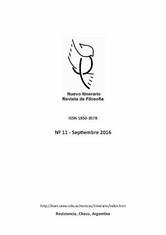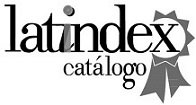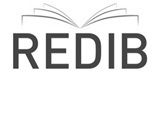El cine da qué pensar. Una lectura ricœuriana del tiempo y la narración audiovisual
DOI:
https://doi.org/10.30972/nvt.2017566Palabras clave:
Ricouer, tiempo, precomprensión narrativa audiovisual, imaginación, espectadorResumen
La investigación lleva las categorías y apuestas de la hermenéutica del tiempo de Paul Ricœur, concebida fundamentalmente para el mundo de la acción y el texto escrito, al relato audiovisual. Esta operación tiene un doble propósito: poner a prueba los alcances del pensamiento ricœuriano, e identificar las posibilidades que éste ofrece a los estudios fílmicos. Para ello, retoma la triple mimesis que constituye la configuración del tiempo, expuesta en Tiempo y narración (Temps et récit, 1983, 1984, 1985), y la emplea en el examen de tres fábulas sobre el tiempo, los filmes Close-Up (Kiarostami, 1990), JFK (Stone, 1991) y El arca rusa (Sokurov, 2002). El abordaje de estas obras muestra la pertinencia de la hermenéutica para comprender la configuración de lo temporal y lo narrativo en la experiencia de un texto audiovisual. Asimismo, conduce a identificar diferencias entre el texto escrito, objeto de estudio de Ricœur, y el audiovisual, y proponer adecuaciones a la teoría del hermeneuta francés, como son la postulación de una precomprensión narrativa específicamente audiovisual; la revisión del vínculo entre mundo y lenguaje, así como del nexo con el referente, en relatos cuyo sistema sígnico está constituido por imágenes y sonidos; y la distinción entre las nociones de imagen e imaginación.
Citas
Abel, O.; Porée, J. (2007). Le vocabulaire de Paul Ricœur. París: Ellipses.
Baracco, A. (2017). Hermeneutics of the Film World. A Ricoeurian Method for Film Interpretation. Londres: Palgrave Macmillan.
Bordwell, D. (1997). “El estilo clásico de Hollywood, 1917-1960”. En D. Bordwell, J. Staiger y K. Thompson. El cine clásico de Hollywood. Estilo cinematográfico y modo de producción hasta 1960 (pp. 1-94) (E. Iriarte y J. Cerdán, Trad.). Barcelona: Paidós.
Carroll, N. (1996). Theorizing the moving Image. Cambridge: Cambridge University Press.
Casetti, F. y Di Chio, F. (1991). Cómo analizar un film. Barcelona: Paidós.
Deleuze, G. (1983). Cinéma 1. L’image-mouvement. París: Minuit.
Deleuze, G. (1985). Cinéma 2. L’image-temps. París: Minuit.
Friedman, D. (2010). Writing on Film as Art Through Ricoeur’s Hermeneutics. Journal of Writing in Creative Practice, 3 (2), 161-170. doi: https://doi.org/10.1386/jwcp.3.2.161_1
Friedman, D. (2012). The Unforgiven. An Hermeneutical Reading. Tesis de doctorado, Universidad de Melbourne.
Gabriel, S. (2017). “Mythos, mímesis e imagen más allá de Paul Ricoeur. Hacia una ‘identidad icónica’”. Diálogos, 102, 41-73.
Gadamer, H.-G. (2007). Verdad y método (A. Agud Aparicio y R. de Agapito, Trad.) Salamanca: Sígueme.
García-Noblejas, J. J. (2004). “Identidad personal y mundos cinematográficos distópicos”. Comunicación y Sociedad, vol. XVII, no 2, p. 73-87.
Grondin, J. (2008). ¿Qué es la hermenéutica? (A. Martínez Riu, Trad.). Barcelona: Herder.
Jameson, F. (2009). Valences of the Dialectic. Londres: Verso.
Kant, I. (2016). Crítica de la razón pura (P. Ribas, Trad.). Madrid: Taurus.
Kiarostami, A. (1990). Close-Up (título original: Klūzāp, nemā-ye nazdīk). Irán: Kanoon.
Lelièvre, S. (2014). “Cinéma et imaginaire social en venant de Ricœur”. Études Ricœuriennes, 5 (2), 81-104. doi: https://doi.org/10.5195/errs.2014.259.
Ricœur, P. (1975). La métaphore vive. París: Seuil.
Ricœur, P. (1983). Temps et récit. 1. L’intrigue et le récit historique. París: Seuil.
Ricœur, P. (1984). Temps et récit. 2. La configuration dans le récit de fiction. París: Seuil.
Ricœur, P. (1985). Temps et récit. 3. Le temps raconté. París: Seuil.
Ricœur, P. (1986). Du texte à l’action. Essais d’hermenéutique II. París: Seuil.
Ricœur, P. (1990). Soi-même comme un autre. París: Seuil.
Ricœur, P. (1999). “Préface”. En A. Gaudreault. Du littéraire au filmique (pp. 13-16). Quebec: Nota Bene/Armand Colin.
Ricœur, P. (2000). La mémoire, l’histoire, l’oubli. París: Seuil.
Ricœur, P. (2009). Philosophie de la volonté. 2. Finitude et culpabilité. París: Points.
Ricœur, P. (2010). Écrits et conférences 2. Hermenéutique (D. Frey y N. Stricker, Comps.). París: Seuil.
Ricœur, P. (2024). Lectures on Imagination (G. Taylor, R. Sweeney, J.-L. Amalric y P. Crosby, Eds.). Chicago: The University of Chicago Press.
Russo, E. (2008). El cine clásico. Buenos Aires: El Manantial.
Sokurov, A. (2002). El arca rusa (título original: Russkij kovcheg). Rusia: Seville Pictures.
Stone, O. (1991). JFK. Estados Unidos: Regency Enterprises.
Publicado
Versiones
- 2024-09-18 (2)
- 2024-06-28 (1)
Cómo citar
Número
Sección
Licencia

Esta obra está bajo una licencia internacional Creative Commons Atribución-NoComercial 4.0.
Les autores ceden a Nuevo Itinerario los derechos de publicidad de sus trabajos, toda vez que hayan sido admitidos como parte de alguno de sus números. Ello no obstante, les autores retienen los derechos de propiedad intelectual y responsabilidad ética así como la posibilidad de dar difusión propia por los medios que consideren.












51.jpg)

